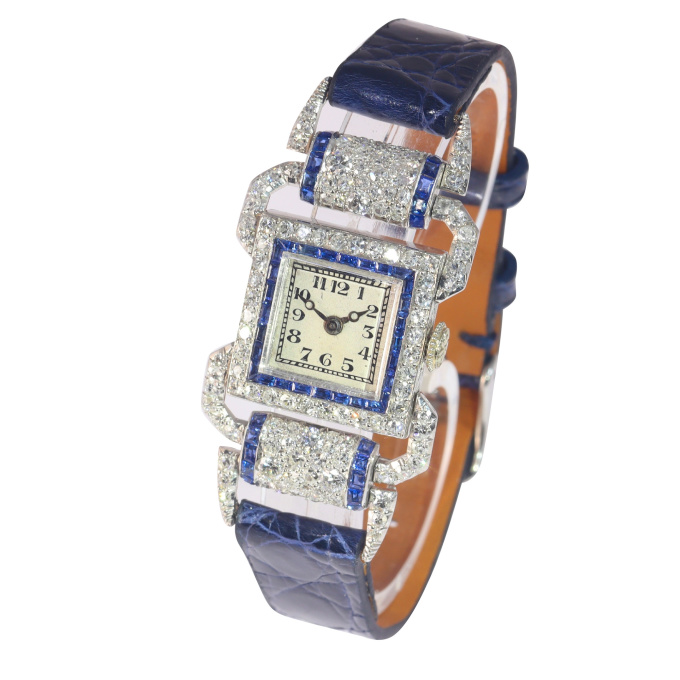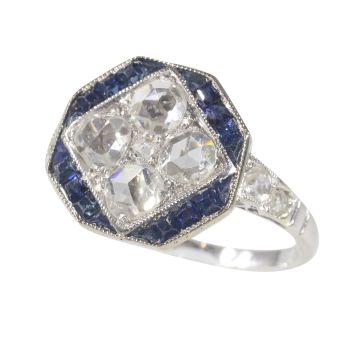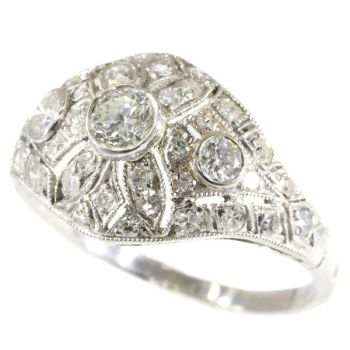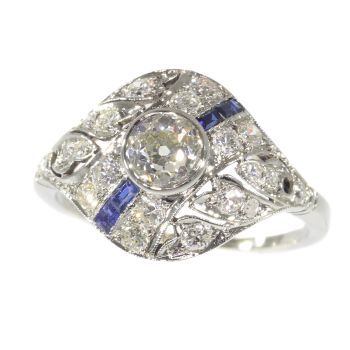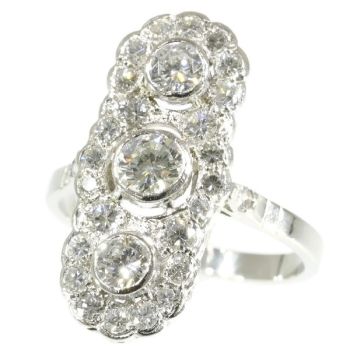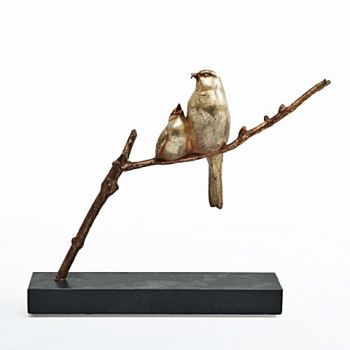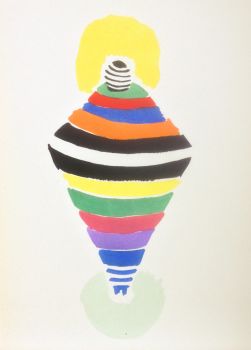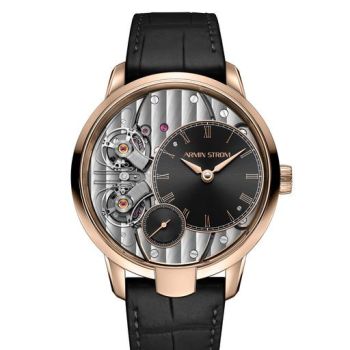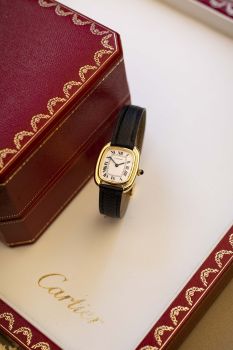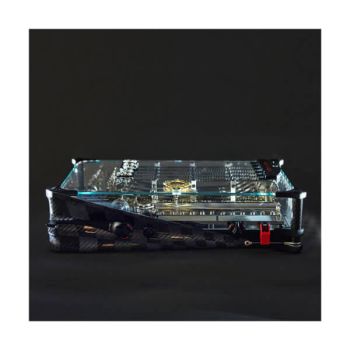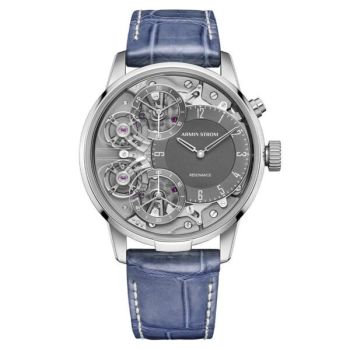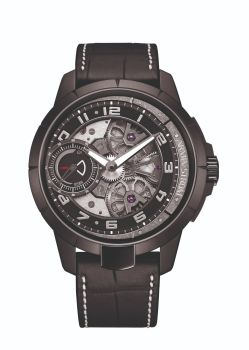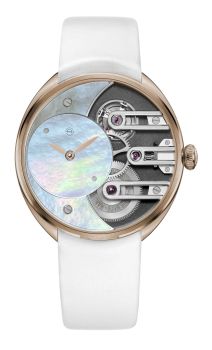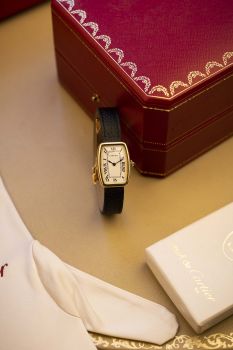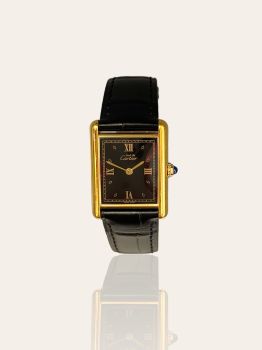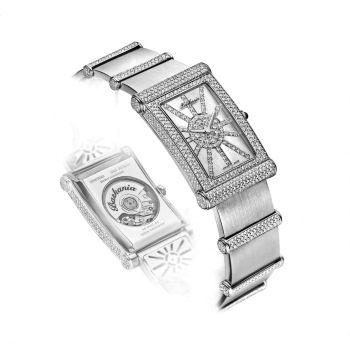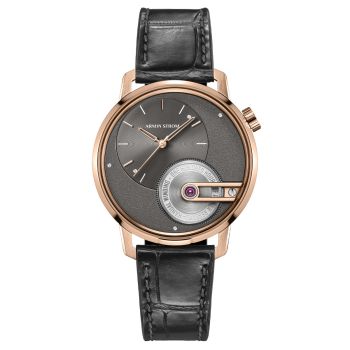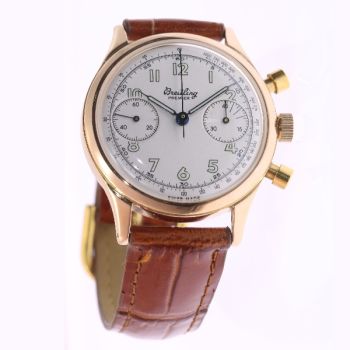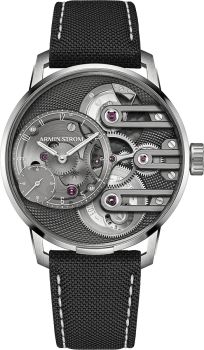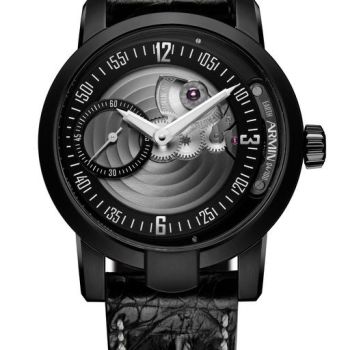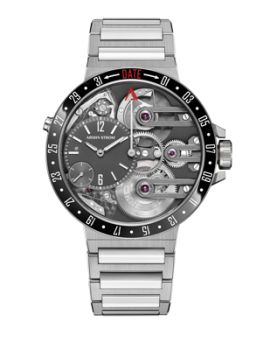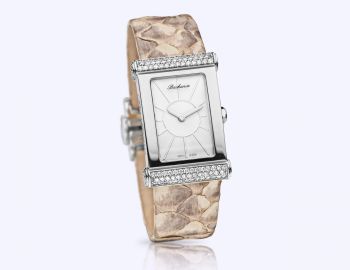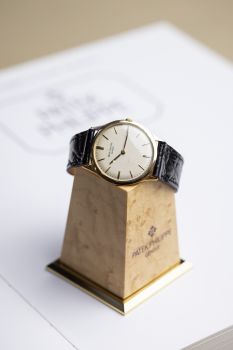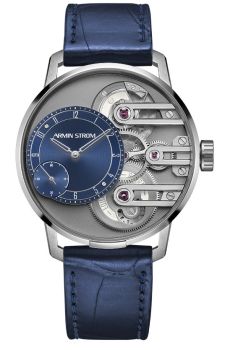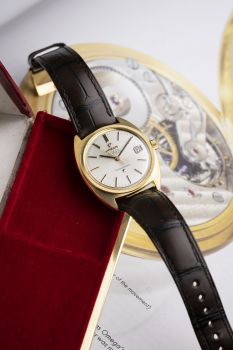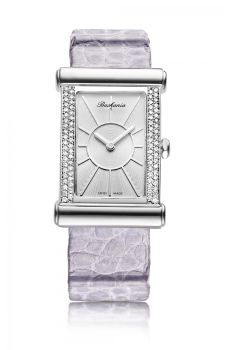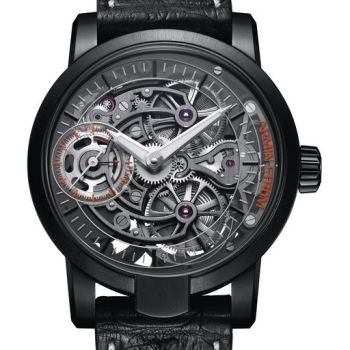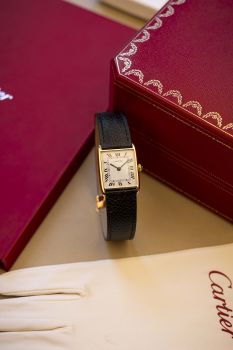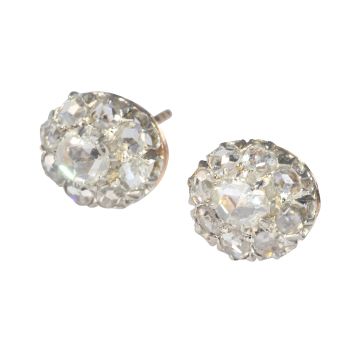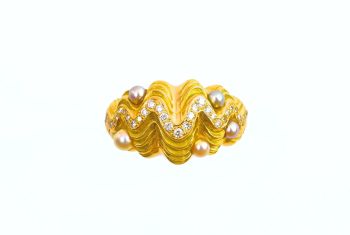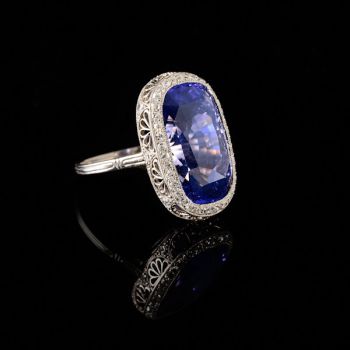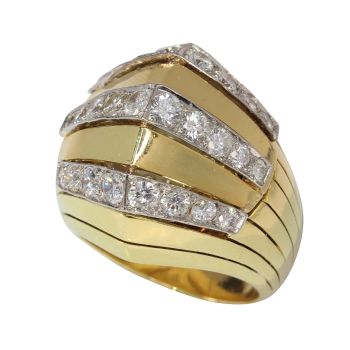Vintage Art Deco platinum ladies wrist watch made by Leon Hatot set with diamonds and sapphires 1920
Leon Hatot
DiamanteZafiroPiedra preciosaPlatino
Actualmente no disponible a través de Gallerease
- Sobre la obra de arte
Antique jewelry object group
ladies wrist watch
Condition
very good condition
more info on our condition scale
Country of origin
France
Style
Art Deco - Art Deco is an eclectic artistic and design style which had its origins in Paris in the first decades of the 20th century. The style originated in the 1920s and continued to be employed until after World War II. The term "art deco" first sawwide use after an exhibition in 1966, referring to the 1925 Exposition Internationale des Arts Décoratifs et Industriels Modernes that was the culmination of high-end style modern in Paris. Led by the best designers in the decorative arts such asfashion, and interior design, Art Deco affected all areas of design throughout the 1920s and 1930s, including architecture and industrial design, as well as the visual arts such as painting, the graphic arts and film. At the time, this style was seen aselegant, glamorous, functional and modern.
See also: Art Deco
more info on styles
Style specifics
Abstract motives and geometrical forms are quite typical for the Art Deco period. Art Deco moved away from the soft pastels and organic forms of its style predecessor, Art Nouveau, and embraced influences from many different styles and movements of the early 20th century, including Neoclassical, Constructivism, Cubism, Modernism,and Futurism. Its popularity peaked in Europe during the Roaring Twenties and continued strongly in the United States through the 1930s. Although many design movements have political or philosophical roots or intentions, Art Deco was purelydecorative.
Period
ca. 1920
Events & facts of this era, poetry of this era, fashion of this era.
Material
platinum (touchstone tested)
more info on precious metals
Extra information
Leon Hatot (1883-1953) Started in 1911, bought the atelier of Brédillard in Paris and was supplier to the important jewellery houses in quartier Vendôme and of René-Boivin.
Diamonds
Six old brilliant cut with an estimated weight of ± 0.48ct
112 single brilliant cut diamonds (also called 8/8)with an estimated weight of ± 2.00ct
Total diamond count
118 pcs.
Total diamond weight
approx. 2.48 crt with an average colour and clarity F/J, vs/i
All diamond weights, color grades and clarity are approximate since stones are not removed from their mounts to preserve the integrity of the setting.
All diamonds we offer are screened by the I.J.G.C. for whether they are natural or synthetic, and all diamonds in this jewel are 100% guaranteed to be natural.
Precious stones
48 sapphires
It is a very common practice to treat gemstones to intensify their clarity or colour. The item in question has not been tested in this regard.
Birthstones
Diamond is the birthstone (or month stone) for April and sapphire for September.
more info on birthstones
Hallmarks
Mastermark LH for Leon Hatot and the French control mark for platinum representing a dog's head that was in use in France from about 1912.
more info on hallmarks
Dimensions
width case 2,30 cm (0,91 inch)
see picture with a ruler in millimeters and inches
Weight
22,00 gram (14,15 dwt)
- Sobre el artista
Léon Hatot (1883 – 1953) fue un emprendedor apasionado: inventivo, innovador y sobre todo progresista. Un niño de su tiempo en realidad, que quedó fascinado por la aplicación de los materiales y técnicas más novedosos.
El empresario y orfebre Léon Hatot visitó la École d'Horlogerie de Besançon de 1895 a 1898 y luego la École des Beaux Arts, también en Besançon. Siendo muy joven, se instaló en Besançon en 1905 como empresario independiente y se especializó en el grabado de cajas de relojes.
Pronto estableció también un taller para relojeros y joyeros en París. Aquí, con la ayuda de un gran número de artesanos, fabricó relojes de alta calidad utilizando metales preciosos especiales. En ese momento, Hatot era uno de los pocos en fabricar relojes además de joyas. Los suministró a las casas comerciales más importantes de la Rue de la Paix en París.
Curioso y con la vista puesta en el futuro, Hatot pronto se interesa por la aplicación de la electricidad en los relojes. En 1920, esto resultó en el establecimiento de un departamento para investigar y desarrollar relojes alimentados por batería. Desde 1923, los relojes eléctricos Hatot se venden bajo la marca ATO en los sitios de París y Besançon.
Desde el momento en que estos relojes aparecieron en el mercado, fueron un éxito rotundo. Durante la 'Exposición internacional de artes decorativas', Hatot recibió un 'Gran Premio' por todo su programa de relojes eléctricos. La característica de sus modelos era que estaban alojados en mármol, metal cromado, maderas refinadas o vitrinas procesadas de las famosas fábricas de Lalique.
Debido al diseño decorativo de estos relojes, Hatot puede establecer un nombre en el mundo de los relojes como 'maestro del período Art Déco'. Su contribución al mundo científico también es grande. Gracias a su espíritu creativo y visionario ya sus numerosos inventos, Hatot logró llevar la evolución en el campo de los relojes a un nivel superior hasta el segundo cuarto del siglo XX inclusive. Francia lo recompensó por esto con el premio nacional más alto, la 'Légion d'Honneur'.
En 1931, en la Exposición Colonial de París, Léon Hatot presentó una serie de relojes eléctricos compactos que marcaron el comienzo de una nueva generación de relojes decorativos. Rompió por completo con la tradición actual en la que las cajas servían como decoración y convirtió al propio reloj en el centro de todas las miradas. De esta manera, Hatot se convirtió en pionero de una nueva tendencia de moda.
Artwork details
Related artworks
- 1 - 4 / 24
Armin Strom
Armin Strom "Mirrored Force Resonance First Edition"2022 - 2023
Precio a consultarHa-Juweliers
Armin Strom
Armin Strom "Lady Beat Rosé Gold Mother of Pearl"2022 - 2023
Precio a consultarHa-Juweliers
Armin Strom
Armin Strom "Gravity Equal Force Ultimate Sapphire"2022 - 2023
Precio a consultarHa-Juweliers
Armin Strom
Armin Strom "Tribute 1 Stainless Steel Blue Dial"2022 - 2023
Precio a consultarHa-Juweliers
1 - 4 / 24Artista Desconocido
Anillo eduardiano con zafiro que cambia de color1910 - 1920
Precio a consultarAns Hemke-Kuilboer Juwelier & Antiquair
1 - 4 / 24

